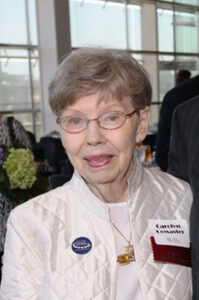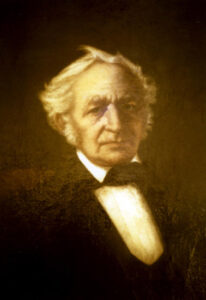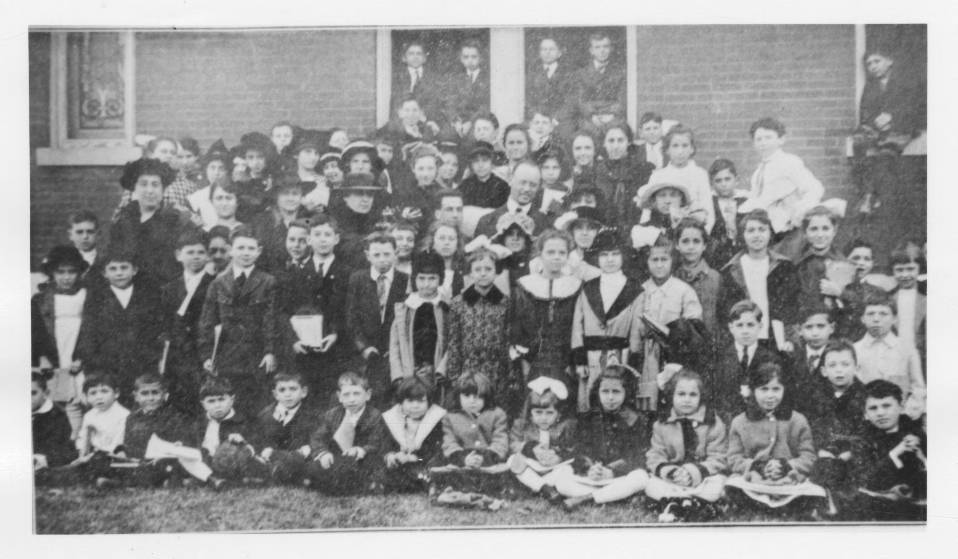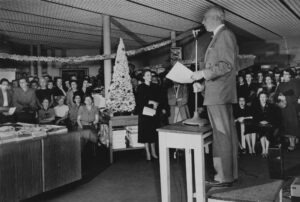calsfoundation@cals.org
Shining a Light on Arkansas’s Jewish History for Hanukkah
As Jewish families in Arkansas illuminate their menorahs during the Hanukkah season, the Butler Center for Arkansas Studies at the CALS Roberts Library would like to shine our own light on the archival collections illustrating the enduring traditions of the state’s Jewish community.
Hanukkah, also known as the Festival of Lights, carries deep significance in Jewish tradition. It commemorates the rededication of the Second Temple in Jerusalem during the Maccabean Revolt in the second century BCE, signifying not only a physical victory but also embodying the resilience, hope, and perseverance of the Jewish people in the face of adversity.

Within the CALS Butler Center’s collections, the Carolyn LeMaster Arkansas Jewish history collection (BC.MSS.08.07) stands as a substantial representation of the Jewish experience in Arkansas. This extensive collection, spanning seventy-four linear feet, documents the history of Jewish families from across the state. Arkansas historian Carolyn LeMaster, though not Jewish herself, recognized the underrepresentation of Jewish history in Arkansas and dedicated years to collecting stories, photographs, and documents that capture the essence of the community’s journey.
The Jewish presence in Arkansas dates to the mid-nineteenth century when immigrants from Europe established communities across the state. Despite being a minority, these early settlers, like Abraham Block, laid the foundation for organized Jewish life. Block, the first Jew to settle in Arkansas, faced challenges, yet his story remains preserved within LeMaster’s collection and the Abraham Block research collection (BC.MSS.12.37).

As waves of immigrants from Central and Eastern Europe arrived in Arkansas, they significantly contributed to the state’s growth, establishing congregations and impacting commerce. Their integration into Arkansas’s civic life led to the founding of towns named after early Jewish residents, showcasing the community’s influence.
Over time, the Jewish population in Arkansas continued to grow, forming both Orthodox and Reform congregations. Landmarks such as Temple B’nai Israel, established in 1866, bear witness to this historical growth and are documented in the Pulaski County religion photograph collection (BC.PHO.2.A.12).
The Concordia Association was established in 1864 to help Jewish immigrant families adapt to their new lives in Arkansas. It is said to be one of the first social clubs to form in the state. Many non-Jewish groups also used the ornate space, which included a ballroom, for events. This strengthened rapport between the Jewish community and non-Jewish groups, especially those in German society.
From 1882 – 1887 Concordia Hall was located in what is now the CALS Roberts Library’s Concordia Hall gallery. As of winter 2023, it is serving as the temporary youth services space while CALS remodels the Main Library. The building has been known variously as the Probst & Hilb Building, the Porbeck & Bowman Building, and the Budget Office Furniture Building. The Concordia Hall Collection (BC.MSS.17.17), containing material preserved by the Ehrenberg family, includes items from events held in the Probst & Hilb building, as well as at other locations.

There is later representation of Jewish organizing in the Jewish Federation of Arkansas records (BC.MSS.13.28). The organization that is now the Jewish Federation of Arkansas was formed in 1912 as the Federation of Jewish Charities, with the purpose of pooling resources to help community members in need. In 1956, the name was changed to the Jewish Welfare Agency, and in 1985 to the Jewish Federation of Little Rock. Finally, in 1990 the name was again changed to the Jewish Federation of Arkansas (JFA). Over the years the organization’s purpose broadened from the focus on individual needs to include community building and education.

The commercial landscape of Central Arkansas was also influenced by Jewish roots, seen in businesses like Kempner, Blass, and Pfeifer department stores. The Strauss-Pfeifer family collection (BC.MSS.15.61) offers a glimpse into this nuanced history, revealing the intertwining of personal lives and business within the Central Arkansas Jewish community.
After many decades of historical growth, the Jewish population in Arkansas has begun to decline, now primarily concentrated in urban centers in central and northwestern Arkansas due to shifting migration patterns. But the recent surge in certain areas, notably Bentonville due to corporate ties, contrasts with the decline in smaller congregations.
The enduring legacy of Arkansas’s Jewish community, documented in various archival collections, serves as a testament to resilience of this community in the state. This history continues to shape the fabric of Arkansas society, showcasing diversity and perseverance. Read more about the Jewish community in Arkansas on the CALS Encyclopedia of Arkansas here.
Explore the archival material related to Jewish history in Arkansas held by the CALS Butler Center here.
By Danielle Afsordeh, community outreach archivist at the CALS Butler Center for Arkansas Studies/Roberts Library




